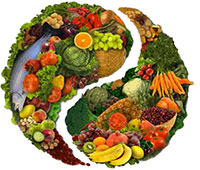Stand, Walk and Push
How do we find the sweet spot and ensure that we get enough—but not too much—physical activity? The best way to accomplish this is by focusing on three elements that can be expressed in the acronym SWAP: Stand, Walk, and Push.
Nourish Your Movement
Movement requires energy. If you are Pushing yourself, please be mindful of what, and how much energy you are providing your body via your food.
Moderate-intensity movement primarily burns fat as fuel, requiring more fat in the diet. Higher intensity movement primarily burns glucose as fuel, requiring more carbohydrates in the diet.
Balance Your Movement
The human body is an organic machine designed to move. In order to balance our movement, we must optimize our structure, infuse movement into our day, and properly fuel it.
Sign up for my free Elements of Health program to learn more about balancing your movement.

